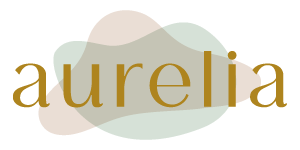Introduction
In a world where differences are often misunderstood, one organisation lights the path for autistic individuals, their parents, and the professionals who work with them. Welcome to “Transformative Autism Training: Fostering Strengths and Abilities”, a world where we don’t just understand autism, we celebrate it.
At Aurelia Autism Services, we’re firm believers that understanding paves the way for acceptance, and acceptance leads to progress. In this blog post, we’ll delve into the fascinating landscape of autism training and explore how it nurtures the strengths and abilities of autistic individuals, unlocking potential and changing lives.
We’re here to show that autism training is a transforming tool that enables autistic people to shine brilliantly in their own right, not merely as a learning resource for professionals and parents. So, you’re at the right place if you’re a parent looking for support, a healthcare professional looking to improve your skills, or an educator seeking to provide a positive learning environment.
Autism training is not just a stack of professional textbooks or a survival kit for parents. No, it’s a power-up, a secret weapon that enables those on the autism spectrum to shine brilliantly. So, you’re at the right place if you’re a parent looking for support, a healthcare professional looking to improve your skills, or an educator seeking to provide a positive learning environment. Let’s embark on this journey together.
Are you ready to change the narrative to focus on strengths instead of difficulties? Then buckle up, dear reader, and prepare for an enlightening ride into the heart of autism training.
The Landscape of Autism: Beyond the Diagnosis
Autism – a word that can carry so much weight. It can bring to mind an array of images and associations, not all of which accurately capture the depth and diversity of the autism spectrum. However, one thing is clear: understanding the landscape of autism takes us far beyond the initial diagnosis.
Officially known as Autism Spectrum Disorder (ASD), it is a neurodevelopmental condition that affects how a person interacts with the world around them. Differences in social interaction, communication, and behaviour characterise it. But if you’re picturing a cookie-cutter image of what an autistic individual is like, scrap that thought. Autism is a spectrum condition that manifests differently in each individual, and no two autistic individuals are the same. From the quiet, introspective child engrossed in their favourite topic to the outgoing, chatty adult with a knack for remembering dates, the diversity within the autism spectrum is vast and beautiful.
But here’s the kicker: the diagnostic process often focuses on the challenges and difficulties associated with autism. While acknowledging these is crucial, we should not overlook the strengths and unique abilities that autistic individuals bring to the table. Autistic individuals often have exceptional skills in memory, attention to detail, and an in-depth understanding of specific topics. They may get a fresh, unique perspective on problem-solving or exhibit extraordinary creativity and originality in various fields. They are, quite simply, brilliant in their unique ways.
Understanding this broader landscape of autism, which stretches beyond the diagnosis and encompasses challenges and strengths, is vital not just for the autistic individual themselves but for everyone who interacts with them – parents, healthcare professionals, educators, and society. After all, it’s only when we truly understand something that we can engage with it in a meaningful and beneficial way.
With this broader understanding as our backdrop, let’s turn our attention to autism training, a vital tool for fostering the strengths and abilities of autistic individuals. Read on, and let’s venture into this transformative territory together.
Autism Training: A Catalyst for Change
Imagine, if you will, a key. Not just any key, but a key that can unlock a world of understanding and acceptance. A key that enables us to connect with, support, and uplift autistic individuals. That key, dear reader, is autism training.
Autism training can be seen as an educative journey that provides a detailed roadmap for understanding the complexities and nuances of autism. From parents grappling with a new diagnosis to healthcare professionals seeking to provide the best care and educators aiming to create an inclusive learning environment, autism training can empower all.
Why is autism training so pivotal, you may ask? The answer lies in its ability to change perceptions, foster understanding, and guide effective action. Training helps us look beyond the surface, beyond the stereotypes and misconceptions, and truly appreciate the diversity and potential inherent within the autism spectrum.
For parents, autism training can equip them with practical strategies for supporting their child while also helping them understand their child’s unique world experience. This understanding can help to reduce feelings of overwhelm and uncertain and instead foster a sense of empowerment and confidence.
For healthcare professionals, autism training provides valuable insights into how autistic individuals may perceive and respond to the healthcare environment. It offers practical strategies for improving communication, reducing distress, and enhancing the quality of care provided.
For educators, training can guide the development of teaching methods and classroom environments that accommodate the learning styles of autistic students. It can enhance understanding of the unique strengths and challenges that autistic students may bring to the educational setting, fostering an inclusive and supportive learning environment.
 By fostering a better understanding of autism, training encourages a shift in focus – from seeing autism as a list of deficits to recognising and nurturing the unique strengths and abilities of autistic individuals. It’s a game-changer, a catalyst for positive change in how we perceive and support the autism community.
By fostering a better understanding of autism, training encourages a shift in focus – from seeing autism as a list of deficits to recognising and nurturing the unique strengths and abilities of autistic individuals. It’s a game-changer, a catalyst for positive change in how we perceive and support the autism community.
Having introduced the key, it’s time to unlock the door and explore how training helps unleash the potential in every autistic individual. Let’s have a look at a strength-based approach to autism training.
Unleashing Potential: Fostering Strengths and Abilities through Autism Training
Autism training, when approached with the right mindset, has the potential to bring about transformative change. It’s like a gardener tending to a unique plant, nurturing it with the right amount of sunshine, water, and care to grow into its full, vibrant potential. Let’s delve deeper into how autism training acts as this gardener, fostering strengths and abilities within the autism community.
A strength-based approach, the cornerstone of impactful autism training, involves recognising and nurturing the unique strengths and abilities of autistic individuals. It’s about shifting the lens from a deficit-based view, which focuses on the challenges and ‘shortcomings’ associated with autism, to a more positive, holistic perspective that appreciates each individual’s unique qualities and potential.
This is not to downplay the challenges that autistic individuals may face. Instead, it’s about balancing these realities with a focus on abilities, fostering a more empowering and positive outlook. For instance, an individual’s strong attention to detail might translate into a knack for spotting patterns or discrepancies, a skill precious in various fields. A unique way of processing sensory information might lend itself to exceptional talent in art or music.
Autism training equips parents, educators, and healthcare professionals with strategies to help autistic individuals leverage their strengths. It provides practical tips on tailoring communication, creating conducive environments, and modifying tasks to align with an individual’s unique abilities. This empowers autistic individuals to build on their strengths and engage with the world in meaningful ways.
 Moreover, training provides the tools to create more inclusive environments at home, in school, or in the healthcare setting. By fostering understanding and acceptance, it promotes an atmosphere where autistic individuals can be themselves, express their abilities, and contribute in their unique ways.
Moreover, training provides the tools to create more inclusive environments at home, in school, or in the healthcare setting. By fostering understanding and acceptance, it promotes an atmosphere where autistic individuals can be themselves, express their abilities, and contribute in their unique ways.
Through the lens of strength-based autism training, we begin to see not just a landscape filled with challenges but a world brimming with untapped potential. As we journey together through this transformative process, let’s look at some practical strategies for everyday life, bringing the power of autism training to the forefront.
Autism Training Techniques: Practical Strategies for Everyday Life
So, you may be asking, how do we bring this transformative autism training into our day-to-day lives? How do we translate this newfound understanding into practical, effective strategies that support and empower autistic individuals? Well, brace yourselves because we’re about to dive head-first into the nitty-gritty of autism training techniques.
One of the first tools in our arsenal is structured teaching. Autistic individuals often thrive in predictable, organised environments, and structured education caters to this need. It could be as simple as creating visual schedules to bring clarity to daily routines or as involved as designing a calming, distraction-free space for focused activities. Structure and organisation can be woven into the fabric of everyday life to enhance comfort and productivity.
Next up is communication support. Remember, communication is a two-way street, and it’s not just about how autistic individuals communicate with us but also about how we communicate with them. Techniques such as using visual aids, simplifying language, and allowing ample time for responses can significantly enhance communication. And remember, not all communication is verbal – keep an eye out for non-verbal cues, as they can be just as, if not more, revealing.
Then we have social skills training. Autistic individuals may experience social interactions differently, and targeted training can help them navigate these complexities. Role-playing social scenarios, practising turn-taking in conversation, or learning to interpret facial expressions can be invaluable additions to their social toolbox.
An essential part of the journey is understanding and managing behaviour. Behaviours are a form of communication, often signaling unmet needs or discomfort. Through autism training, we learn to decipher these signals and respond effectively. To manage behaviour, we can implement strategies like clear boundaries, visual cues, identifying triggers and coping strategies in daily routines. Patience, consistency, and empathy go a long way in this process.
Let’s not forget sensory integration strategies. Sensory sensitivities are a reality for many autistic individuals, and everyday environments can be adapted to manage these sensitivities. It could be creating a sensory-friendly corner at home, using deep pressure techniques for calming, or engaging in sensory play activities in the park. These strategies can enhance comfort, focus, and overall well-being.
Lastly, the strength-based approach. This is about identifying and nurturing the unique strengths and interests of each autistic individual. Encouraging the exploration of their interests, providing opportunities to use their strengths, and constantly celebrating their successes can boost their self-esteem and motivation.
These are just a few strategies autism training brings to the table. They’re like arrows in a quiver, ready to be drawn out when needed. Of course, the key to success lies in tailoring these strategies to each individual’s needs and strengths, which is the true essence of autism training.
These strategies, these tools in our autism training toolbox, aren’t just theoretical concepts but practical approaches that become a part of everyday living. Tailored to individual needs and strengths, they can empower autistic individuals and those around them to navigate the world of autism with confidence and positivity. With these tools, let’s look towards the future and envision the exciting developments in autism training.
The Future of Autism Training: Trends and Developments
As we stand on the brink of this exciting new frontier in autism training, we can’t help but look ahead to the trends and developments shaping the future of this transformative field. From embracing technology to fostering inclusive communities, the future of autism training holds promise and potential.
 One of the most significant trends shaping the future of autism training is the increasing integration of technology. Interactive apps, software, virtual reality, and AI-powered tools make autism training more accessible, personalised, and engaging. These technologies can provide immersive experiences for autistic individuals, helping them practise social skills or manage sensory sensitivities in safe and controlled virtual environments. For parents, educators, and healthcare professionals, technology can offer valuable resources, training modules, and support at the click of a button, breaking down geographical and logistical barriers such as the training we at Aurelia provide.
One of the most significant trends shaping the future of autism training is the increasing integration of technology. Interactive apps, software, virtual reality, and AI-powered tools make autism training more accessible, personalised, and engaging. These technologies can provide immersive experiences for autistic individuals, helping them practise social skills or manage sensory sensitivities in safe and controlled virtual environments. For parents, educators, and healthcare professionals, technology can offer valuable resources, training modules, and support at the click of a button, breaking down geographical and logistical barriers such as the training we at Aurelia provide.
As we look ahead, we also see a strengthening commitment to inclusive education. Schools and educational institutions increasingly recognise the need for specialised training to support autistic students. This includes developing inclusive teaching methods, fostering supportive learning environments, and providing educators with the training they need to meet the diverse needs of their students. This trend towards inclusivity reflects a broader societal shift towards embracing diversity and promoting equity.
We’re also witnessing a shift towards early and proactive intervention. Autism training is no longer confined to reactive strategies but moves towards early identification and proactive management. The focus is on building a solid foundation of skills and coping strategies from an early age, thereby maximising the potential of each autistic individual.
Moreover, the rise of community-based training initiatives is a promising development. These initiatives aim to foster autism-friendly communities by providing autism training to various community members – from local businesses to public service providers. This community-wide approach ensures a supportive and understanding environment for autistic individuals, making day-to-day interactions more comfortable and enriching.
Lastly, the move towards a more holistic, strength-based approach in autism training is expected to continue. Recognising and celebrating the unique strengths of autistic individuals, rather than focusing primarily on deficits, can foster a more positive narrative around autism.
As we venture into the future, the landscape of autism training will evolve and grow, reflecting our expanding understanding of autism and our unwavering commitment to promoting acceptance and empowerment. So, as we continue this transformative journey, let’s keep our eyes fixed on the horizon and our hearts filled with hope. The future is bright, and the journey is just getting started.
Conclusion
Navigating the landscape of autism may, at times, seem like venturing into uncharted territory. Yet, as we’ve explored throughout this piece, autism training offers a compass guiding us through this journey. As we’ve unravelled the transformative power of autism training, we have seen how it fosters strengths, unleashes abilities, and opens doors to new possibilities.
 Every autistic individual is a unique constellation of strengths, interests, and perspectives. Autism training helps us appreciate this constellation’s brilliance, especially with a strength-based approach. It equips us with practical strategies, tools, and insights that can be woven into the tapestry of everyday life, making the world a more understanding, inclusive, and enriching place for autistic individuals.
Every autistic individual is a unique constellation of strengths, interests, and perspectives. Autism training helps us appreciate this constellation’s brilliance, especially with a strength-based approach. It equips us with practical strategies, tools, and insights that can be woven into the tapestry of everyday life, making the world a more understanding, inclusive, and enriching place for autistic individuals.
But we must remember that the field of autism training is not static. It’s ever-evolving, just like our understanding of autism itself. As we look towards the future, we see promising trends and developments that promise to take autism training to new heights.
Whether you’re a parent seeking ways to support your child, a healthcare worker aiming to provide the best care, or an educator striving to foster an inclusive learning environment, autism training offers invaluable resources. It empowers us not just to understand autism better but to foster a world where autistic individuals are recognised, celebrated, and supported in all their uniqueness.
As we conclude, we leave you with a call to action. Engage with our autism training. Absorb its insights. Implement its strategies. Embrace its transformative potential. And most importantly, let’s continue to foster a world where every autistic individual can shine uniquely. The journey is challenging, but together, armed with knowledge, empathy, and understanding, we can make it rewarding.
Don’t wait to unlock the potential of autism training. Discover Aurelia’s unique, strength-based approach today and start fostering incredible strengths and abilities in every autistic individual. Dive in now!
